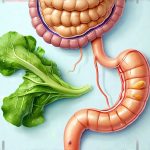Our digestive health is often something we don’t think about until it’s disrupted. Changes in bowel movements can be unsettling, but they also provide valuable insight into our overall well-being. Understanding what’s “normal” for your body – and recognizing when things deviate from that norm – is a crucial step towards proactive healthcare. This isn’t always easy, as discussions about stool are often avoided due to discomfort or embarrassment.
Fortunately, there’s a surprisingly simple and effective tool designed to help navigate this topic: the Bristol Stool Chart. Developed in 1997 by Dr. Kenneth Heaton at the University of Bristol, this visual aid categorizes different types of stool based on their appearance, providing a standardized way to assess bowel habits and communicate them effectively with healthcare professionals if needed. It’s a practical resource that can empower individuals to take control of their digestive health awareness.
What is the Bristol Stool Chart?
The Bristol Stool Chart isn’t about judging what’s “good” or “bad,” but rather about describing different bowel movement types. It features seven distinct images representing various stool forms, ranging from hard and separate lumps to watery diarrhea. Each type corresponds to a specific category based on consistency and appearance, offering a clear visual representation of digestive function.
The chart’s simplicity is its strength. Rather than relying on subjective descriptions like “soft” or “hard,” it provides a concrete framework for identifying and classifying stool types, facilitating more accurate communication with doctors and a better understanding of individual bowel habits.
Using the Chart Effectively
The key to utilizing the Bristol Stool Chart lies in consistent observation. Regularly noting which type(s) most closely resemble your stools – even when everything seems normal – establishes a baseline for comparison. This allows you to quickly identify any significant deviations from your typical pattern, potentially signaling a change in diet, hydration levels, or digestive health.
Types 1 & 2: Hard and Lumpy
Types 1 and 2 represent the harder end of the spectrum. Type 1 stools are described as separate hard lumps like nuts, while type 2 stools resemble sausages but are still lumpy. These indicate slow movement through the colon and can often be associated with constipation. Insufficient fiber intake, dehydration, or lack of physical activity can contribute to these stool types.
These harder stools require more effort to pass and may cause discomfort. While occasional instances aren’t necessarily a concern, frequent occurrence warrants attention and potential adjustments to lifestyle factors like diet and hydration. Monitoring alongside other symptoms is crucial for understanding the underlying cause.
Types 3 & 4: Sausage-Shaped with Varying Softness
Types 3 and 4 are generally considered “normal” bowel movements. Type 3 stools resemble sausages but have a softer consistency, potentially with cracks on the surface. Type 4 stools are smooth and soft like sausages or snakes. These indicate healthy digestion and efficient movement through the intestinal tract.
Type 4 is often seen as ideal – easy to pass and indicative of adequate hydration and fiber intake. However, both types 3 and 4 fall within a normal range, and individual variations are expected. The important factor isn’t necessarily achieving type 4 exclusively but maintaining consistency within this broader spectrum.
Types 5, 6 & 7: Increasingly Watery
Types 5, 6, and 7 represent increasingly watery stool consistencies. Type 5 stools are soft blobs with clear-cut edges, potentially requiring some effort to pass. Type 6 stools resemble fluffy pieces or mushy edges. Type 7 is entirely liquid, representing diarrhea. These often indicate faster movement through the colon, potentially due to factors like dietary changes, infections, or food sensitivities.
Diarrhea (type 7) can lead to dehydration and electrolyte imbalance, so it’s important to stay hydrated and monitor for other symptoms if experiencing prolonged episodes. Type 5 and 6 stools may be temporary responses to diet but should be monitored if persistent. Understanding what triggers these types – such as certain foods or stress – can help manage digestive health proactively.
The Bristol Stool Chart is a valuable self-assessment tool, but it’s not a substitute for medical advice. It provides a common language and visual aid to understand bowel habits better and communicate effectively with healthcare professionals if concerns arise. Remember that individual experiences vary, and “normal” can look different for everyone. Consistent monitoring, alongside awareness of lifestyle factors like diet, hydration, and stress levels, is key to maintaining digestive health and well-being.


















